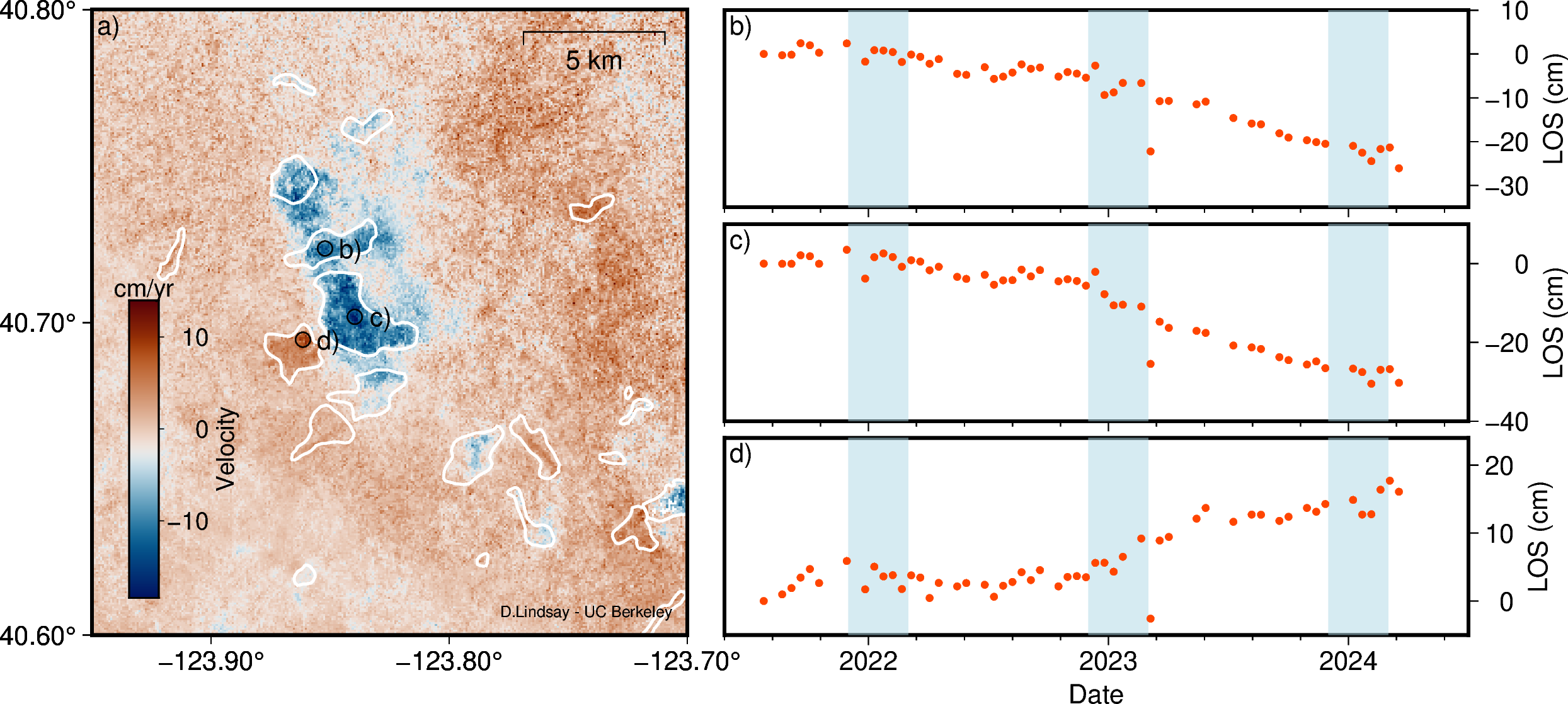Kinematic Evolution Northern California Landslides in Response to Precipitation and Earthquake Shaking, 2021 - 2024
Between July 2021 and March 2024, slow-moving landslides in Northern California experienced earthquake shaking and an abrupt transition from drought to above-average rainfall. It is well known that increases in precipitation accelerate slow-moving landslides by raising pore-water pressure and reducing the effective normal stress on the basal shear zone, leading to decreased frictional strength. However, the impact of earthquake-induced changes in permeability and fracture density of the landslide body in conjunction with increased precipitation is less understood. Using InSAR displacement time series for over 100 slow-moving landslides across Northern California, we investigate whether peak ground shaking associated with earthquakes enhances fluid pathways to the basal sliding surface and changes the expected kinematic response from precipitation-induced pore-fluid changes. We consider factors such as regolith properties, hillslope angles, and structural complexities to explain anomalous landslide behavior, aiming to understand better the combined impacts of precipitation and seismic shaking on slope stability.

